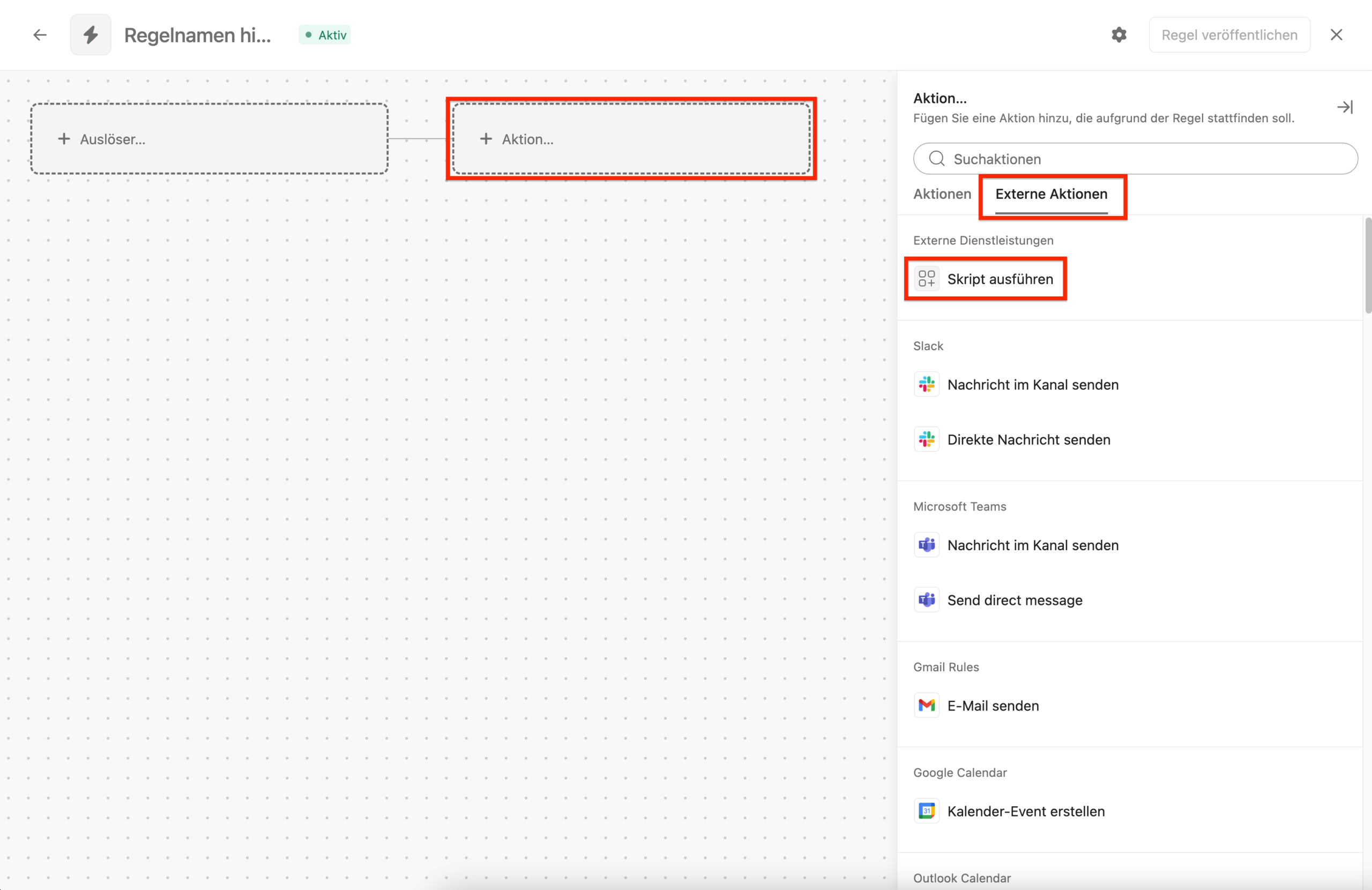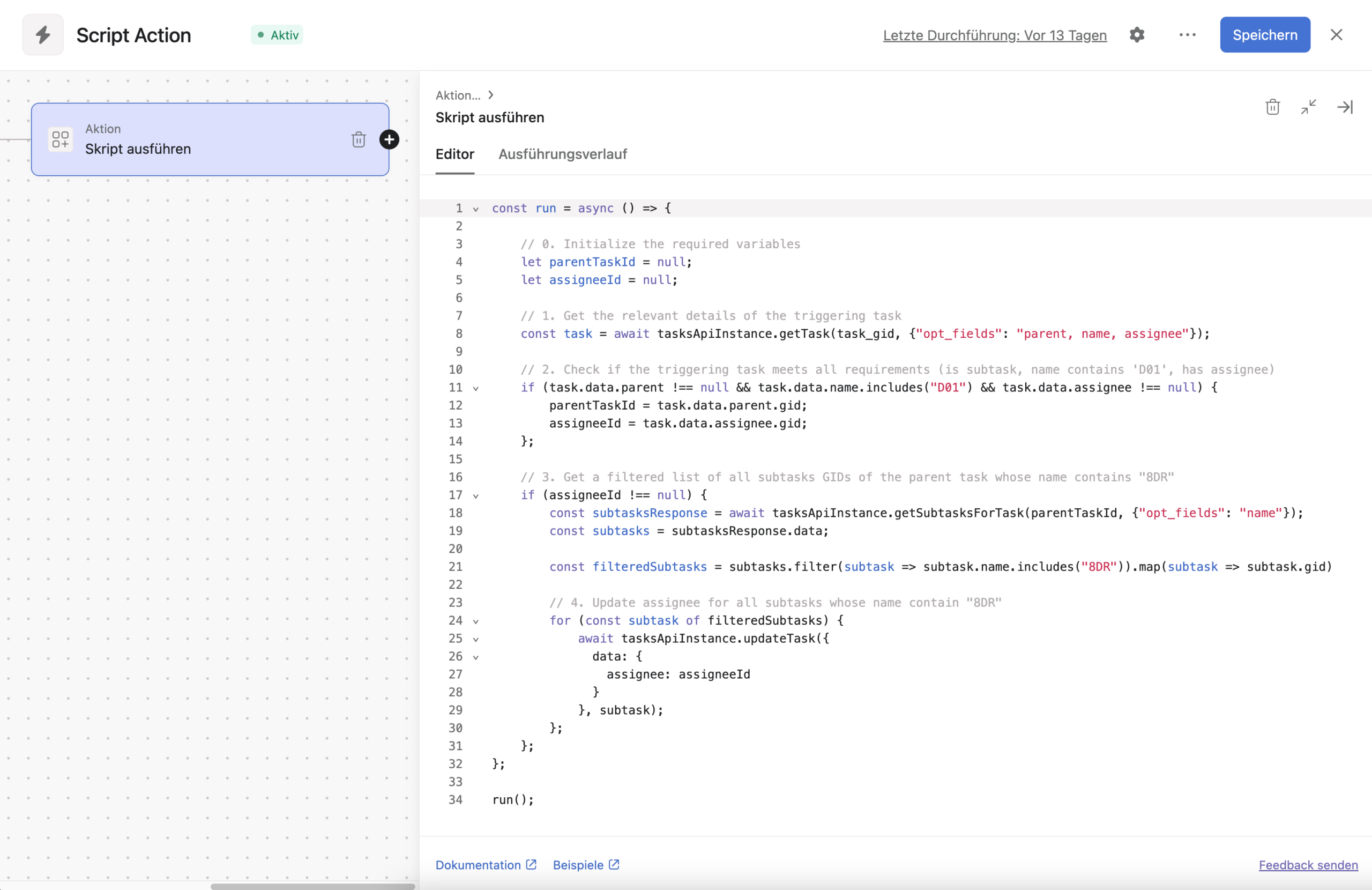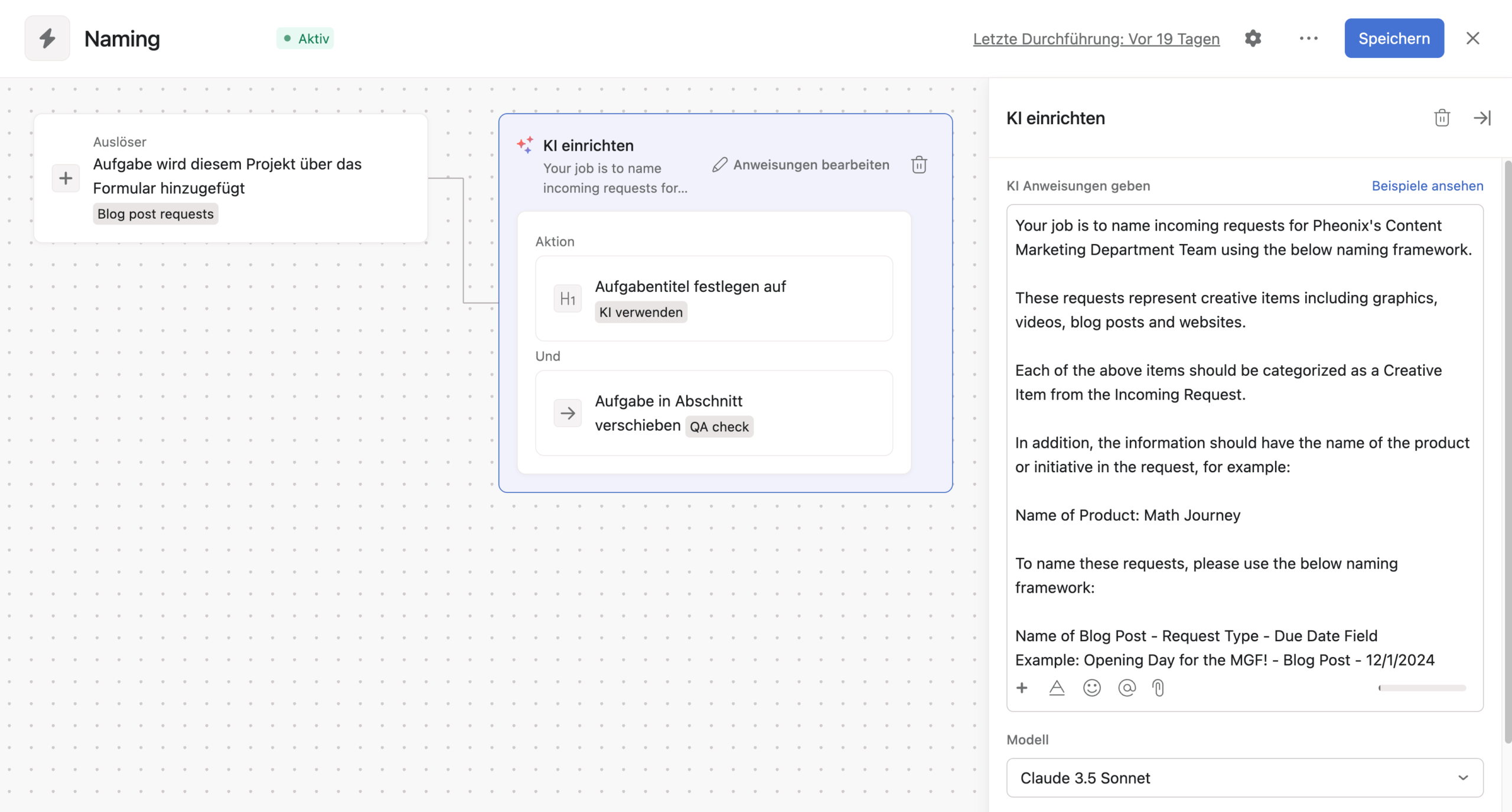After several months in Early Access, Asana has now officially released a powerful new feature that we’ve already successfully implemented in numerous client projects: Script Actions.
Script Actions enhance Asana’s rule editor with a new “Run a script” action, allowing custom code to be embedded directly into rules. This enables automations that previously weren’t possible without third-party tools.
The feature is now available for users on the Enterprise and Enterprise+ plans.
In this article, we’ll explore what Script Actions are, how you can use them, and what to keep in mind when implementing them.
What are Script Actions?
As mentioned, Script Actions expand Asana’s rule editor by adding a new action. Until now, we had to work with a limited set of predefined actions like “Move to section” or “Add to project.” With the new “Run a script” action, it’s now possible to create custom automations using JavaScript (Node.js).

With our script, we interact with the Asana API to create or modify objects such as tasks, projects, portfolios, or goals.
 The next section demonstrates the versatility of Script Actions with practical real-world examples.
The next section demonstrates the versatility of Script Actions with practical real-world examples.
Use Cases
There’s a wide range of use cases for Script Actions. Whenever a specific condition or action isn’t available in Asana’s rule editor, it’s worth exploring whether Script Actions can help automate that process step.
Here’s a selection of automations we’ve successfully implemented for clients in recent months:
- Add a comment to a parent task whenever a related subtask is updated.
- Inherit custom field values from a parent task to all its subtasks.
- Move a parent task to a specific section when a related approval task is marked as “Approved.”
- Move a parent task to a specific section when a related approval task is marked as “Rejected.”
- Assign the same owner from one task to other related tasks based on a specific custom field value.
- Create a new task in another project and add the current task as a subtask.
- Delete all subtasks of a task when a certain field value is selected.
- Update the progress of a goal when a task is completed.
- Update a custom field on a project within a portfolio when a task is completed.
If you have an idea and want to check whether it can be implemented with a Script Action, it’s worth taking a look at the Asana API documentation. In most cases, you’ll find the right endpoint—and implementation is often easier than you might expect.
Alternatively, feel free to reach out to us directly—we’re happy to help bring your ideas to life using Script Actions.
Limitations
As versatile as Script Actions are, there are currently a few limitations to keep in mind.
At this time, scripts cannot yet be used within project templates or bundles. This means that a script must be added manually to each project. However, we’re confident that Asana will enhance this functionality and eventually support the use of Script Actions within templates and bundles—especially to enable organization-wide automation rollouts.
Additionally, scripts can currently only interact with the Asana API. Calls to external API endpoints from other applications are not yet possible. That said, Asana has indicated that they’re open to expanding these capabilities in the future.
If you have suggestions or feature requests, you can submit them directly to Asana via the official feedback form. We’re optimistic that the coming months will bring exciting developments around Script Actions.
Script Actions vs. AI Studio
With the release of Asana AI Studio, entirely new possibilities have emerged for enhancing Asana rules using artificial intelligence. This naturally raises the question: Do we even need Script Actions anymore?

Our clear answer: Absolutely! In many cases, it’s not about making decisions or generating texts, but simply about mapping out structured, precise processes. This is where Script Actions really show their strengths: they are efficient, reliable, and perfect for defined automations.
Another key advantage: AI-based rules consume so-called credits, which are either limited or need to be purchased. In contrast, Script Actions are independent of credits and can be used as often as needed – ideal for building scalable automations across the organization.
Conclusion
At this time, Script Actions can only interact with the Asana API. However, if Asana eventually supports external API endpoints, the possibilities for process automation and integrating various software solutions would be virtually limitless.
If you need an automation in your processes that cannot be represented with the standard actions in the rule editor, Script Actions provide a powerful alternative.
Do you have a specific idea or need assistance with implementation? Feel free to contact us – we’ll help you develop custom Script Actions tailored to your requirements.
